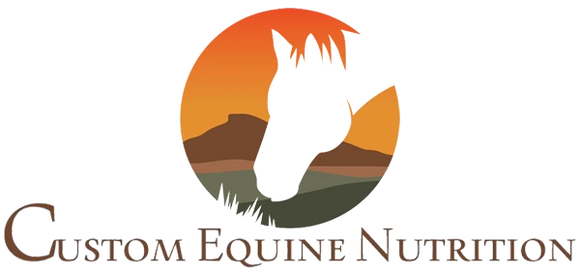Sulfates in the Equine Diet
I was recently asked about sulfates in horse’s diet, I thought it would be a great topic for a new blog post!
What is Sulfate?
Sulfate (SO4) is a sulfur atom surrounded by four oxygen atoms.
Some sulfates are found in foods and drinking water, but the major source of inorganic sulfate is from biodegradation due to body protein turnover of the sulfur amino acids Methionine and Cysteine (Institute of Medicine 2005). I may have just hit on a word some of you recognize; Methionine. Methionine is an amino acid found in forage but made popular for its use in top-line supplements and hoof supplements. This amino acid (and cysteine) is the primary source of sulfate of your horse's diet.
Sulfate is produced in the environment from the oxidation of elemental sulfur, or sulfide minerals. (Institute of Medicine, 2005). Sulfates provide sulfur for your horse’s diets (American Horse Publications AHP, 2017). Cholesteryl Sulfate is the major polar lipid of the horse’s hoof (Journal of Lipid Research. 1984). It is essential for the formation of bonds in keratin that enable protein folding and thus ensures the unique strength of the hoof capsule (Geor 2013). Sulfur plays a role in production of energy from carbohydrates, blood clotting and the formation and health of all connective tissues. It is necessary to form the reinforcing bonds between strands of collagen. Collagen is the base of all connective tissue and framework for bones, joint cartilage, ligaments, tendons and hooves.
Here is a partial list common feed items that contain sulfates:
~ Glucosamine sulfate* and Chondroitin sulfate (Joint Supplements)
~ Methionine (topline and hoof supplements)
~ MSM (Joint)
~ Thiamine (Vit B1 in calming supplements)
~ Biotin (hoof supplements)
~ Copper & Zinc Sulfate (mineral supplements)
* Evidence has been presented suggesting that the beneficial effects of Glucosamine sulfate for osteoarthritis may be due more to the sulfate than to the glucosamine contained in this compound (Hoffer et all., 2001).
But Sulfates are inorganic, will your horse absorb them compared to organic forms?
Inorganic forms of minerals can be listed as Oxides or Sulfates. Most people are familiar with Oxides as Magnesium Oxide is a common feed additive. Studies that have compared the absorption of organic to inorganic minerals have found no differences (Wagner, 2005) (NRC 2007).
Deficiencies and Toxicity:
Extensive work with laboratory animals has shown that growth is stunted when dietary sulfate is purposely eliminated from both the food and water supply. Growth occurred when sulfate was re-introduced to the diet (Institute of Medicine 2005). In human’s, nitrogen retention is improved when sulfate is added to the diet (Zezulka and Calloway, 1976).
The small intestine is the major site of absorption, overconsumption is regulated by renal excretion (Geof et al, 2013). No naturally occurring toxicity has been described in horses (Kellon 1998).
Citations
- Institute of Medicine. 2005. Dietary Reference Intakes for Water, Potassium, Sodium, Chloride, and Sulfate. Washington, DC: The National Academies Press. https://doi.org/10.17226/10925.
- American Horse Publications, "Making sense of feeding sulfur". 2017
- Absorption and Retention of Trace Minerals in Adult Horses, The Professional Animal Scientist, Wagner, E.L. et al.Volume 21, Issue 3, 207 - 211 2005
- Equine Supplements & Nutraceuticals, Kellon, 1998
- Nitrogen Retention in Men Fed Isolated Soybean Protein Supplemented with L-Methionine, D-Methionine, N-Acetyl-L-Methionine, or Inorganic Sulfate, Zezulka, Allison Yates, Calloway, Doris Howes; Journal of Nutrition, 1976. 9-106
- Cholesteryl sulfate: the major polar lipid of horse hoof, Journal of Lipid Research, Wertz, Downing, 1984, 25, 1320-1323.
- Equine Applied and Clinical Nutrition, Geor, Harris, Coenen, 2013
- NRC Nutrient Requirements of the Horse 2007


